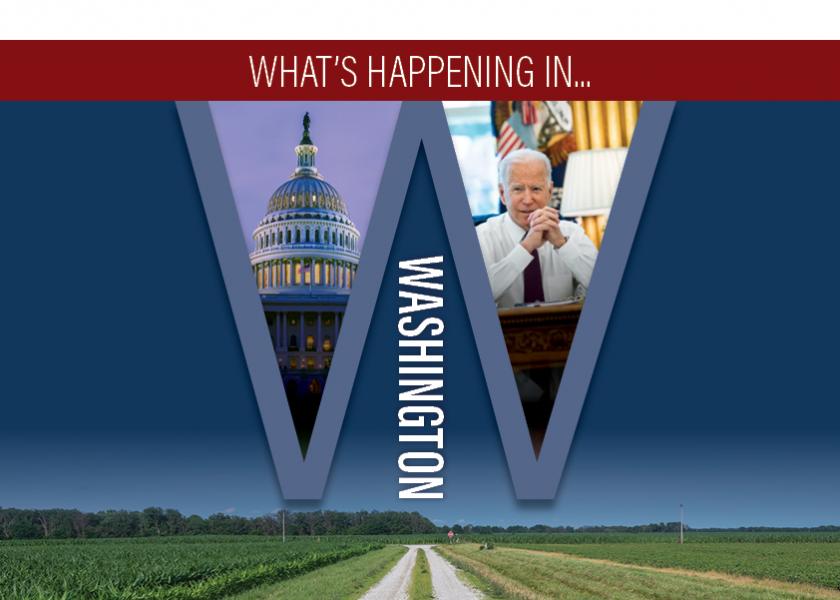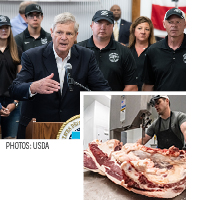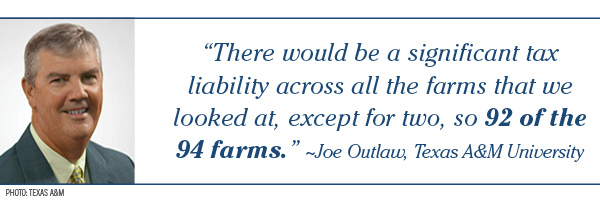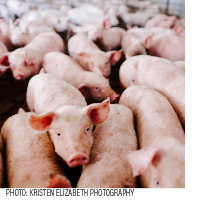What’s Happening in Washington

From infrastructure to immigration, Washington is buzzing with activity relevant to the American farmer. Still in his first year, President Joe Biden and his administration continue to roll out executive orders and policies covering everything from trade to competition to labor. The 117th Congress is also pursuing its own summer and fall legislative goals. Here are a few key issues being discussed inside the Beltway.
EXECUTIVE ORDERS ON COMPETITION
President Joe Biden took a swing at promoting competition in the U.S. economy, including in agriculture, this July when he signed an executive order with 72 initiatives. Biden said the order would lead to lower prices and increased wages.
 The order includes new rules in the Packers and Stockyards Act, which would allow producers to more easily bring and win claims. It also asks USDA to consider new rules around a “Product of the USA” label and asks the Federal Trade Commission to limit equipment manufacturers from restricting access to farmers wanting to repair machinery they own, often known as ensuring the “Right to Repair.”
The order includes new rules in the Packers and Stockyards Act, which would allow producers to more easily bring and win claims. It also asks USDA to consider new rules around a “Product of the USA” label and asks the Federal Trade Commission to limit equipment manufacturers from restricting access to farmers wanting to repair machinery they own, often known as ensuring the “Right to Repair.”
“Equipment manufacturers support a farmer’s right to repair his or her own equipment,” says Stephanie See with the Association of Equipment Manufacturers. “Our industry provides diagnostic guides, service manuals and other tools for repairs and maintenance.”
SMALL MEAT VERSUS BIG FOUR

Agriculture Secretary Tom Vilsack has announced $500 million in new funds for small- and medium- sized meat processing operations. “What it’s going to do is create an opportunity to reverse producers having to sell their cattle at a loss only to learn the processors end up taking their cattle and generating profit,” Vilsack says. “It’s going to create a more competitive market and allow us to have greater price discovery because we will have a true sense of the market.”
The money will be available in the form of grants starting Oct. 1.
WOTUS REVIEW
In June, The Environmental Protection Agency (EPA) announced plans to revise the definition of the Waters of the U.S. Rule.
“We are committed to establishing a durable definition of ‘Waters of the United States’ based on Supreme Court precedent and drawing from the lessons learned from the current and previous regulations, so we can better protect our nation’s waters, foster economic growth and support thriving communities,” says EPA Administrator Michael Regan.
The decision follows a review of the Navigable Waters Protection Rule put into effect less than a year ago under the Trump Administration. Some farm groups expressed disappointment in reopening such a contentious issue.
“We call on EPA to respect the statute, recognize the burden overreaching regulation places on farmers and not write the term ‘navigable’ out of the Clean Water Act,” says Zippy Duvall, president of the American Farm Bureau Federation.
THE COST OF TAX CHANGES
The American Families Plan proposed by the Biden Administration eliminates stepped-up basis for inherited assets beyond $1 million per individual or $2 million per couple. According to USDA, 98% of farm estates will not owe any tax at the asset transfer, as long as a farm stays in the family.

To validate, researchers at Texas A&M University’s Agricultural & Food Policy Center (AFPC) investigated the proposed tax code changes. AFPC used a database of 94 representative farms in 30 states. That data was combined with a farm-level policy simulation model. The economists found all but two operations would be impacted by changes in the stepped-up basis, as well as inheritance tax. The two farms that look to be immune lease 100% of their land.
“We see an average tax liability due to losing a stepped-up basis of $726,000 per farm,” says Joe Outlaw, co-director of AFPC and a Texas A&M economist. “None of those farms can absorb this tax liability without having to refinance and go into debt. Not one.”
PANDEMIC ASSISTANCE FOR LIVESTOCK PRODUCERS
Several livestock producers faced the unthinkable during the pandemic, having to cull their animals due to a lack of processing capacity. USDA announced help for them in July.
 The Pandemic Livestock Indemnity Program (PLIP) aides livestock and poultry producers who were forced to depopulate their herds or flocks between March 1, 2020, and Dec. 26, 2020.
The Pandemic Livestock Indemnity Program (PLIP) aides livestock and poultry producers who were forced to depopulate their herds or flocks between March 1, 2020, and Dec. 26, 2020.
Payments will be based on 80% of the fair market value plus the cost of depopulation and disposal. Eligible livestock include swine, chickens and turkeys. There are additional payment stipulations and rules, but applications can be found at local FSA offices.







